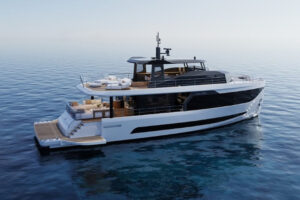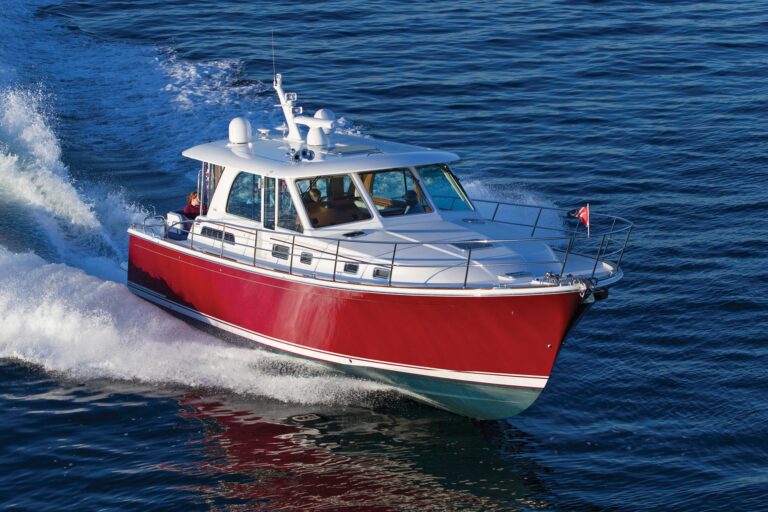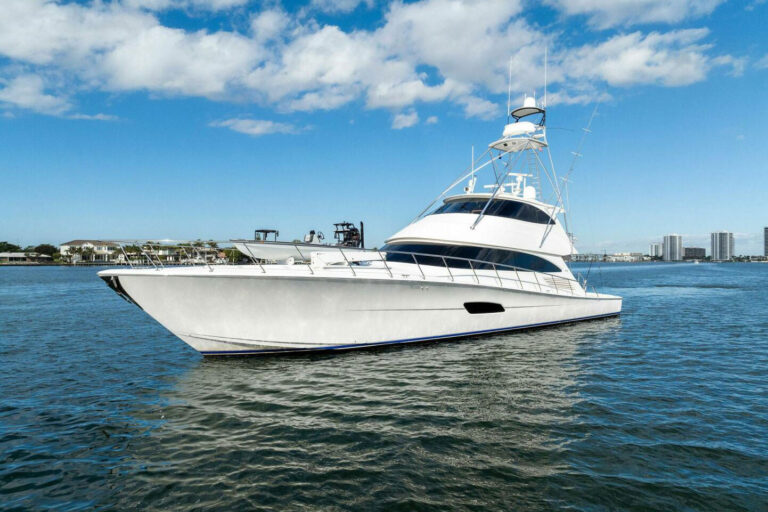A couple of hours aboard the Morris 454 Firefly in August at Southwest Harbor, Maine, simply weren’t going to be enough. In many cases, a short daysail gives me a good indication of a boat’s character and potential, but the wind is a fickle playmate Down East, and so is the rest of the weather. Nevertheless, I packed my sea bag and pointed my car east of north.
When I arrived at Morris’ yard, the tide was low. Two workmen tinkered belowdecks-custom boats are never finished. A light breeze blew out of the south, and the sun had burned huge holes in the morning fog. I cooled my heels in Tom Morris’ office, chatting with Chuck Paine, Firefly’s designer, while the crew finished working and packed their tools.
Paine developed this yacht from the 47-foot Reindeer, a lightweight speedster reviewed in the January 1999 Yachting. Firefly is a custom yacht and could have been a sistership to Reindeer, but the decision to limit her LOA to 45 feet came from the client and his wife. To think of this boat as merely a shortened 47, though, does her an injustice. She’s really a different boat. The differences are subtle and beyond the scope of this review, but conscientiously shortening an existing design requires a lot more thought and effort than simply erasing 2 feet off the plans.
The guiding concept of Firefly (and Reindeer) is to combine a high strength-to-weight ratio with a luxurious cruising interior. Both boats are meant to provide a spirited and competitive ride in the Newport-to-Bermuda and other offshore races, and to serve the owner and his family as a comfortable vacation cottage during cruises.
The only path to these goals is a carefully laminated high-tech structure, this one from Mark Lindsay at Boston BoatWorks. Lindsay and his crew constructed the hull and deck of E-glass and Kevlar over a CoreCell closed-cell foam core that was set in epoxy, vacuum-bagged and post-cured in an oven. The laminating team aligned each layer of reinforcement to get straight fiber paths and carefully trimmed adjoining fiber panels per Paine’s exact layer-by-layer engineering instructions. Belowdecks, all the furniture is cored, even the cabin soles.
This obsessive attention to saving weight let Morris install two fully enclosed heads with a shower in each; Corian countertops, refrigeration, a microwave and a conventional stove with a three-burner cooktop in the galley; and enough stowage to keep a foursome fed and clothed for a week or more. Tankage, too, is generous by the standards of high-performance boats.
Another cleverly conceived element of Firefly’s dual-purpose nature is her carbon-fiber rig and its sail inventory. Built by GMT, Portsmouth, Rhode Island, the rig features triple spreaders swept aft at a small angle and sufficient stiffness to keep the rig in the boat if the crew boggles the runners during a tack. The racing sails are North 3DL. The main has full-length battens and a substantial roach, which hung up on the backstay during our tacks in winds of 8 to 10 knots. A quick shake by hand, as though you were ridding a tablecloth of crumbs off the back porch, reliably clears the sail from the stay. I suspect this would be a moot point in heavier wind. A 150 percent genoa hoisted to 15/16 the height of the mast sweeps the foredeck and gives the boat a lot of horsepower upwind.
These sails set beautifully and drove us to 8.5 knots on the GPS at 30 degrees to the apparent wind. An Antal HS50 sail track absorbs the thrust from the battens and lets the racing sail and the smaller cruising sail stack neatly on the boom. The cruising sail, by the way, is cut flatter than the racing sail, and it has a straighter roach. The cruising foretriangle is 100 percent. We didn’t have time to try the cruising inventory.
Unless you request otherwise, you automatically get two characteristics with a completed Paine design: great performance in light air, and a friendly stability curve. After we’d sailed for a while toward open water and tacked and jibed a few times, the wind began to sneak away, signaling us to head back. We set the asymmetrical spinnaker and bore off. We had 5.5 to 4.5 knots of true wind, but saw 6 knots on the GPS. We overran the spinnaker, causing it to collapse. This speed in light air comes from significant rocker in the bottom, arced sections of small wetted surface area, and a fine entry (a half-angle of about 15 degrees at DWL).
The skeptics among you may wonder about heavy air performance. Not to worry. Firefly has a righting moment of 2,103 pound feet (very stiff), a center of gravity more than a foot below the waterline, and a hell-for-stiff hull. When the wind pipes up and the seas get testy, she’ll exceed her theoretical hull speed and not jar your teeth loose.
Firefly’s windward ability is better than average in spite of her relatively short span of keel. The keel is a hollow, stainless-steel structure with an anvil-shape ballast weight at the end. The hollow part serves as the bilge sump, the underbody being quite shallow, and the ballast weight doubles as an end plate to reduce tip vortices. A deep elliptical rudder contributes a goodly amount of lift, as well as excellent response.
She tacks like a big dinghy and steers quickly; full lock to full lock is only two 360-degree turns of the wheel. She steers accurately, too, even though the steering cables needed adjusting and the wheel had some slop off center. I’d love to sail her with everything nicely tightened.
Below, her accommodations are a delightful blend of traditional arrangements and warm-tone butternut veneer. The raised house over the galley and navigation area floods the entire interior between the two main bulkheads with natural light. Serious ventilation comes from eight overhead hatches, eight portholes and two Dorades. The area way back aft under the cockpit houses a quarter berth each side, joined by a transverse section that makes up into a double. This gives the off-watch crew a comfortable place to sleep at sea, and provides guest accommodations in port.
Paine is a master at drawing attractive deckhouses on small boats, but I’m not crazy about the way this one looks in combination with the cabin trunk forward of it. I’d specify a flush deck forward of the house and abaft it, then lower the profile of the house to go with the flush deck. Sexy, but impractical for anyone who’s taller than about 5 feet, 6 inches.
Duplicating Firefly would require about $850,000, a suitable figure for a yacht that’s likely to stay in the family for a couple of generations.
Contact: Morris Yachts, (207) 244-5509; fax (207) 244-5866; inquiries@morrisyachts.com; www.morrisyachts.com.








